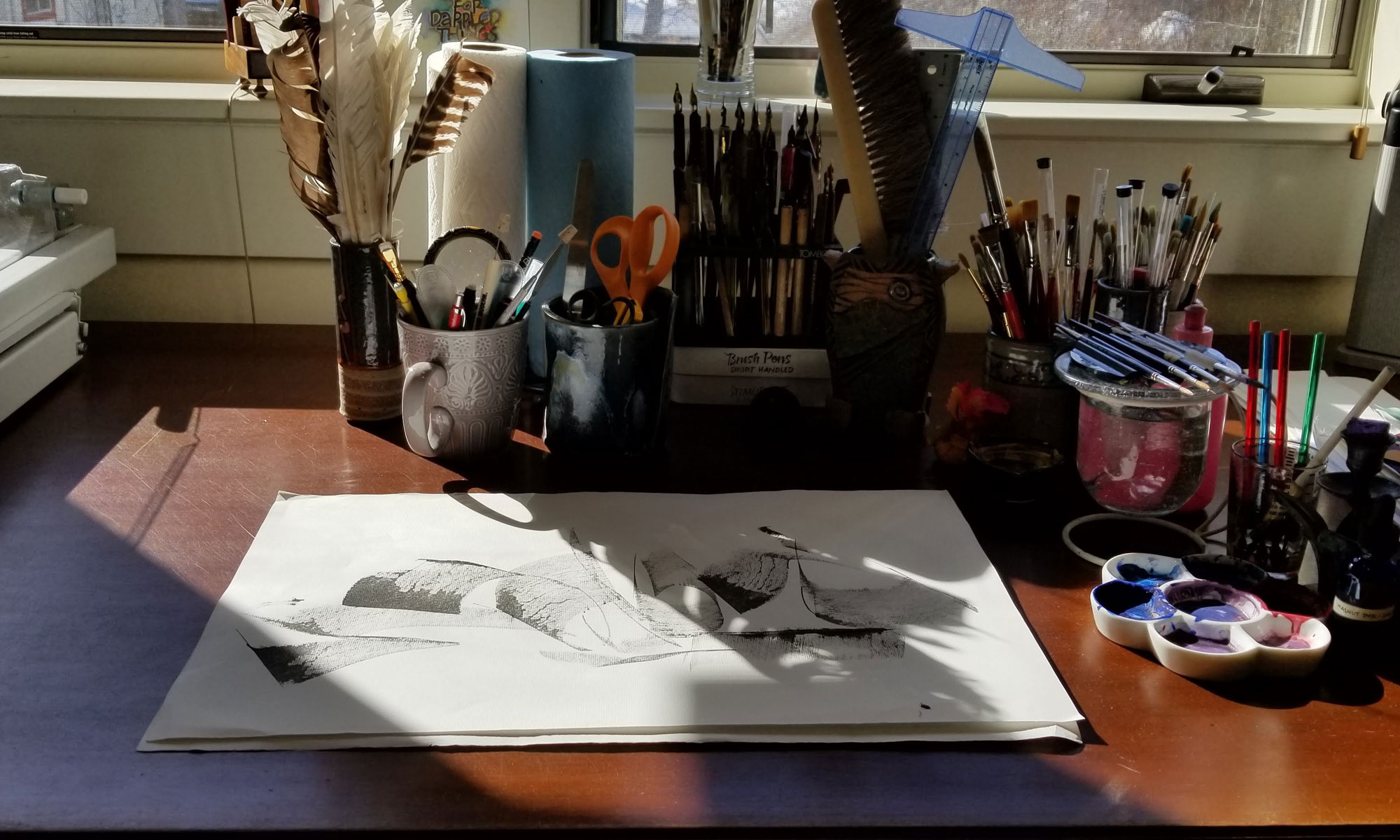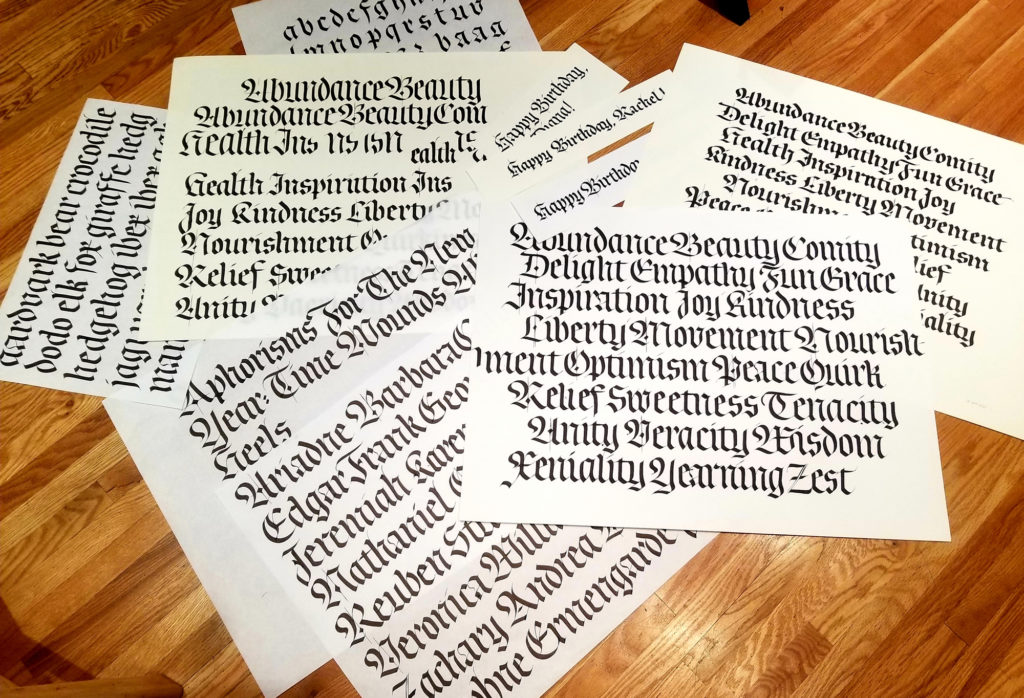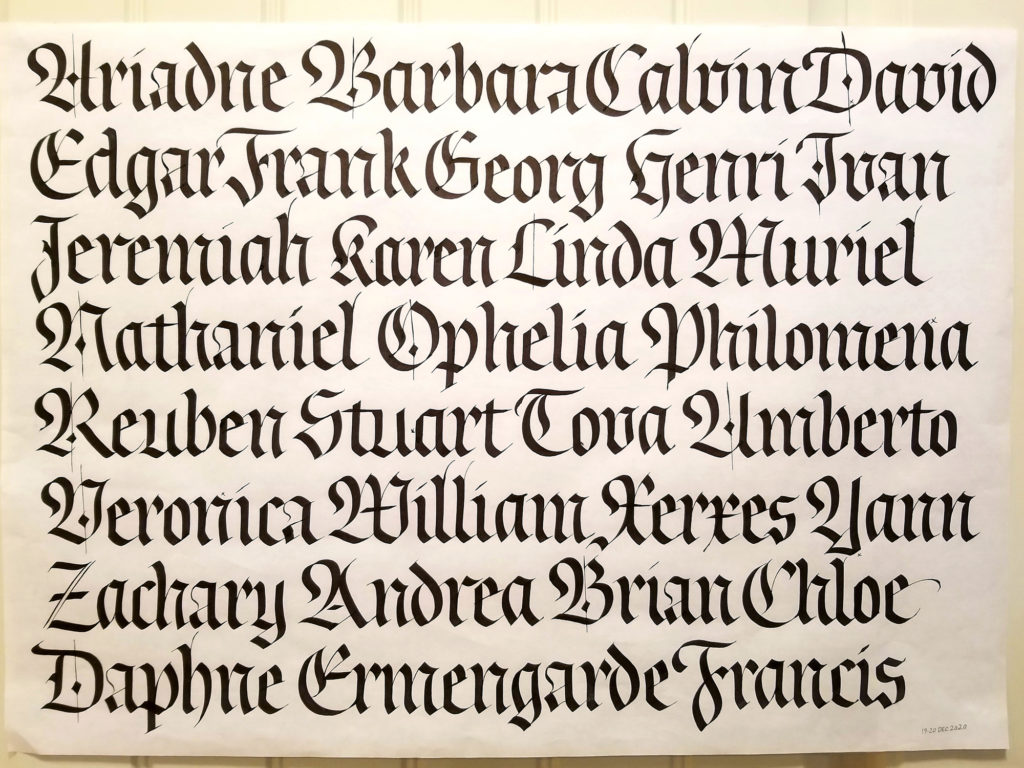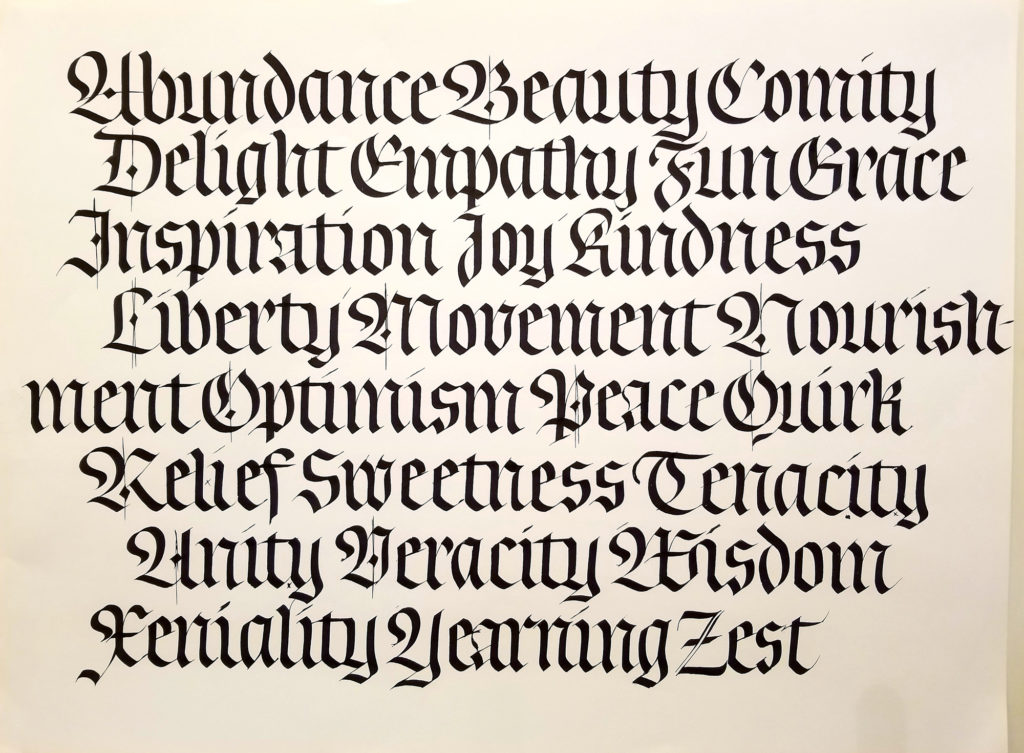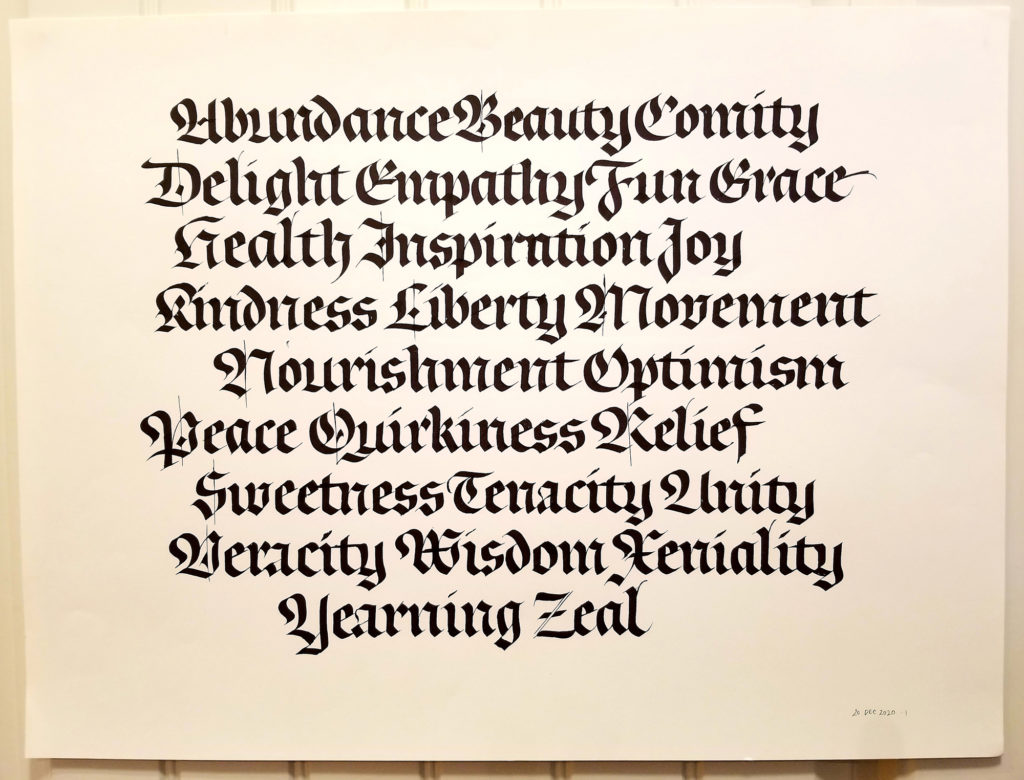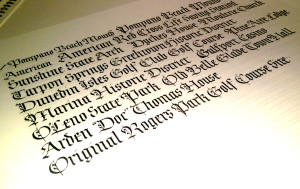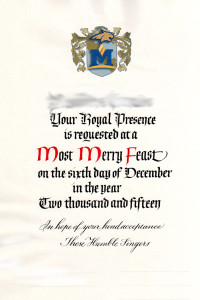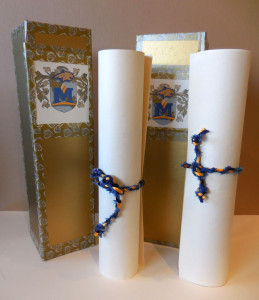This online class finished a couple of weeks ago. However, I’m still working on the plethora of blackletter exemplars and examples that John Stevens shared with us. So it not only was a wonderful class, it still is a wonderful class for me.
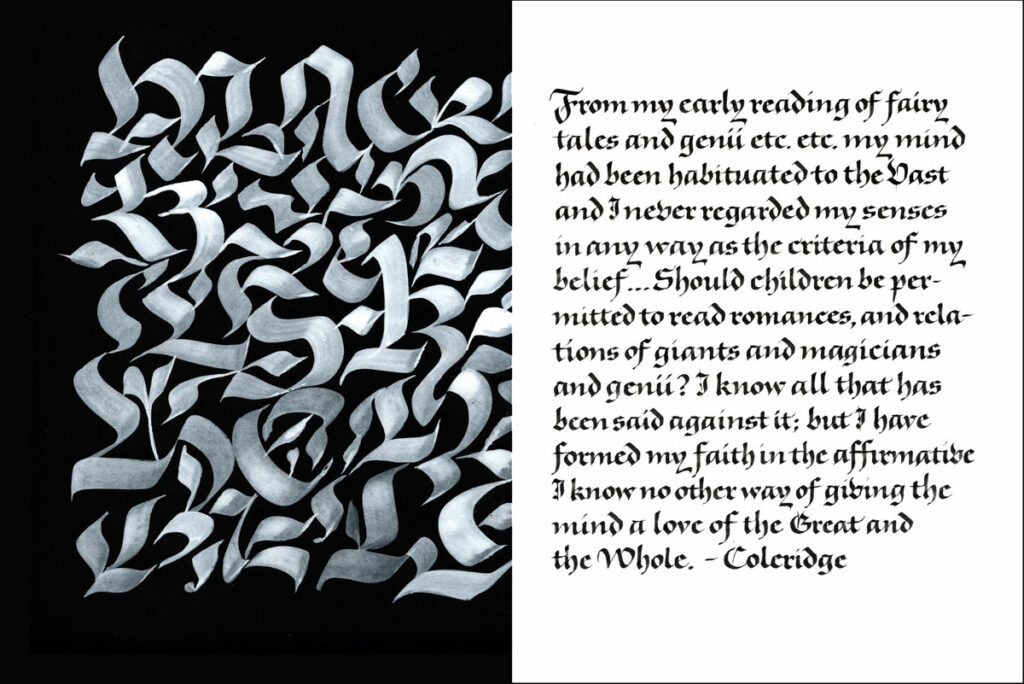
John usually includes layout in his classes. And he often uses the folio to combine image and text on the page together. The work above is a response one of those folio assignments.
I still want to spend some time with double-stroked blackletter (this example of John’s is so luscious), Fraktur capitals with pen and with brush, pattern-filled Lombardic capitals, and some Zapf and Koch exemplars. And more …
It’s interesting to compare the lettering I did in this class with the blackletter work I did in Luca Barcellona’s class two years ago. I felt more comfortable with that earlier work, even as it was happening. And I wonder why? I think it may be that the earlier class did not present as many choices, as much background. I feel that I came away from the blackletter class with John Stevens with a whole panoply of lettering choices and ideas, and that I learned one style very well in Luca Barcellona’s class. Both have been extraordinarily valuable classes. And I’m glad that I happened to take the two classes in the order that I did.
